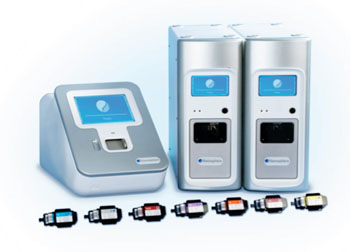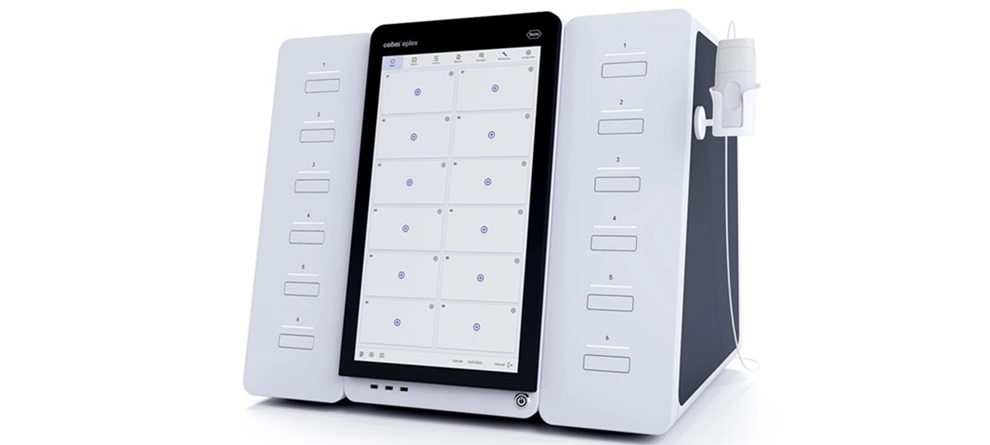Rapid Diagnostic Test Evaluated for Gram-Positive Bloodstream Infections
By LabMedica International staff writers
Posted on 14 Jan 2015
A microarray-based rapid diagnostic test, which includes targets for 12 bacterial species and three resistance determinants, has been compared to routine microbiologic methods for diagnostic accuracy. Posted on 14 Jan 2015
Overall mortality in patients with Gram-positive bacteremia ranges from 10% to 40%, with delays in effective antimicrobial therapy leading to a dramatic increase in mortality and patients with Gram-positive bacteremia also often suffer from substantial long-term morbidity as a result of prolonged hospitalization and generalized deconditioning.

Image: The Verigene Gram-positive blood culture assay systems (Photo courtesy of Nanosphere).
Scientists at the University of Houston (TX, USA) and their colleagues examined blood cultures submitted as part of routine clinical care to a 650-bed tertiary care hospital. All blood cultures with Gram stain identification of Gram-positive cocci between October and December 2013 were prospectively screened for eligibility. Blood cultures were obtained using BacT/ALERT (bioMérieux; Durham, NC, USA) aerobic (FA) and anaerobic (SN) blood culture bottles and incubated in the bioMérieux BacT/ALERT 3D automatic monitoring system.
The Verigene Gram-positive blood culture assay (BC-GP, Nanosphere, Inc.; Northbrook, IL, USA) is a microarray-based rapid diagnostic test that identifies molecular target through DNA extraction and subsequent hybridization to complementary oligonucleotides present on the microarray grid. A secondary oligonucleotide affixed to a gold nanoparticle is then hybridized to captured bacterial DNA, and the target is identified through analysis of the relative optical density of the probes on the panel. Total hands-on time was approximately 10 minutes with a 2.5-hour test run time.
A total of 143 consecutive patients with Gram-positive bacteremia were included in the analysis. BC-GP correctly identified 127/128 (99.2%) of organisms from monomicrobial blood cultures and 9/14 (64.3%) from polymicrobial, including all methicillin-resistant Staphylococcus aureus and vancomycin-resistant enterococci. Stewardship interventions were possible in 51.0% of patients, most commonly stopping or preventing unnecessary vancomycin or starting a targeted therapy.
The authors concluded that the BC-GP is a potentially useful tool for antimicrobial stewardship programs to improve the care of patients with Gram-positive bacteremia. In Monte Carlo simulations, unnecessary antibiotics could be stopped at least 24 hours earlier in 65.6% of cases, and targeted therapy could be started at least 24 hours earlier for 81.2% of the patients. The study was published in the January 2015 issue of the journal Diagnostic Microbiology and Infectious Disease.
Related Links:
University of Houston
bioMérieux
Nanosphere, Inc.













